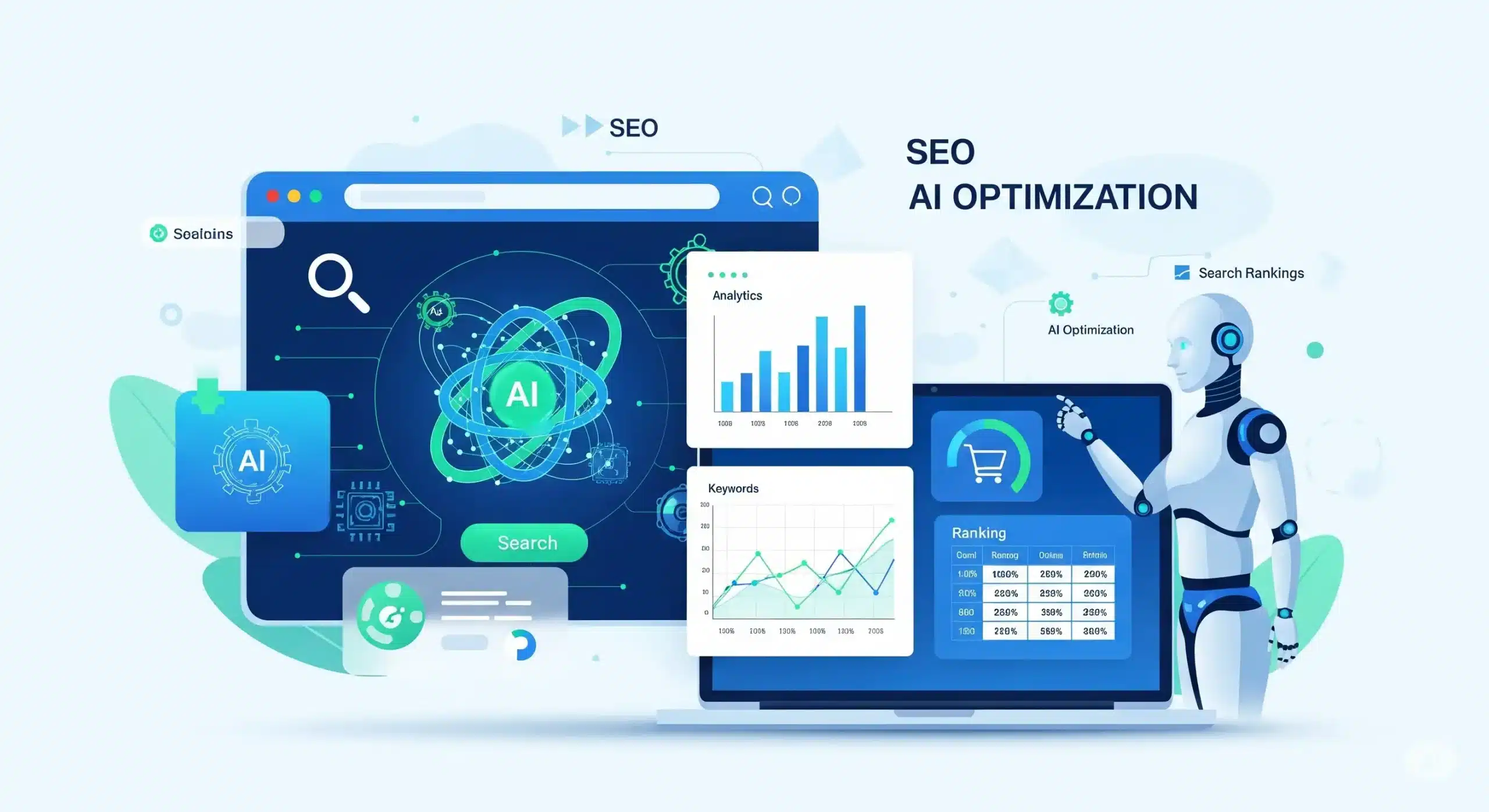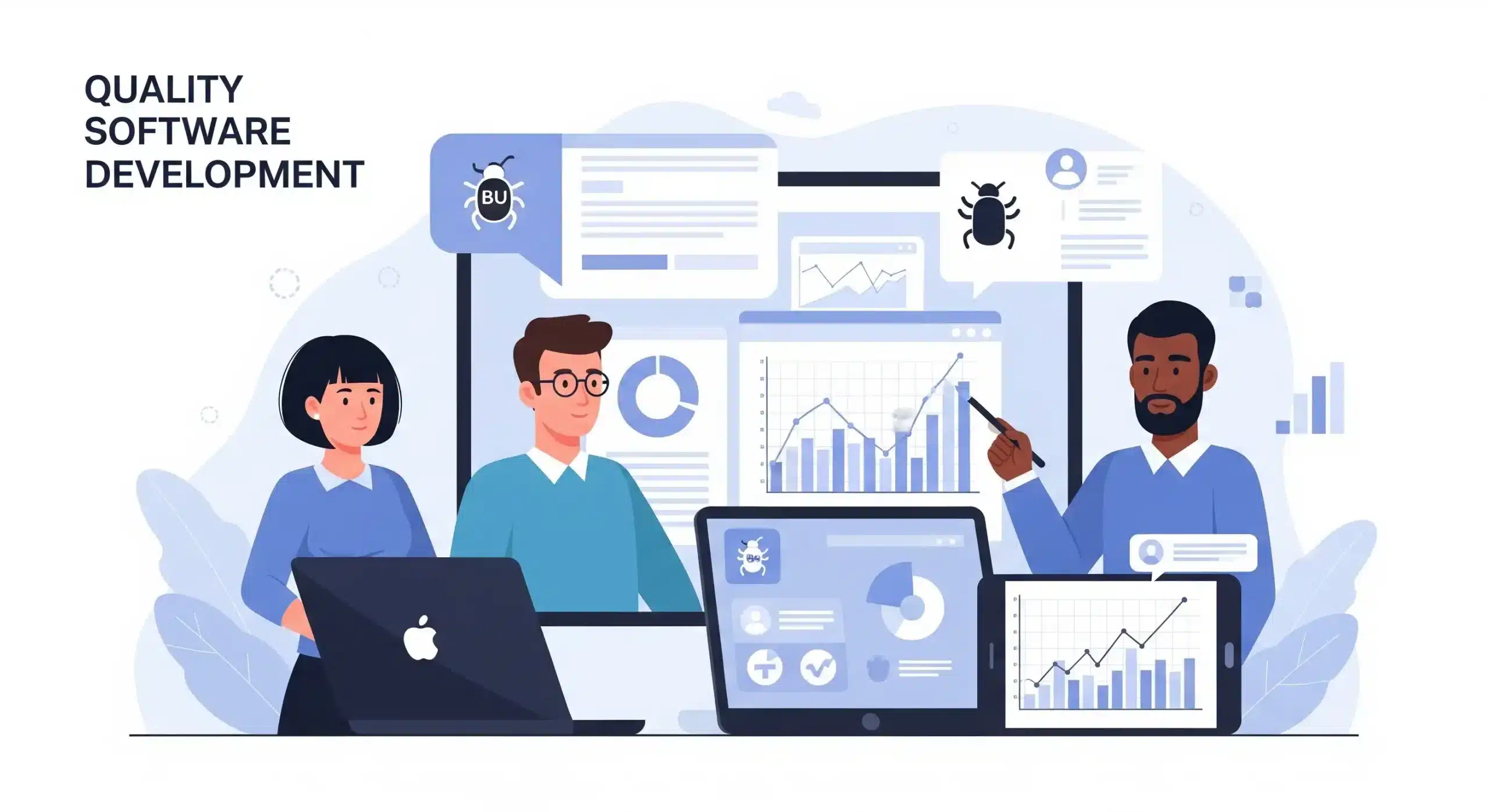A Comprehensive Guide to Human Pose Estimation

Human Pose Estimation stands as a fascinating field within computer vision, wielding the capability to detect and track human bodies’ positions and orientations in images or videos. Its applications span across industries, from healthcare and sports to entertainment and security, making it a crucial technology in today’s digital landscape.
In this comprehensive guide, we embark on an exploration of the complexities of it, diving into its processes, techniques, applications, challenges, and best practices.
What is Human Pose Estimation
It is often referred to as pose detection in the realm of computer vision, stands as a fascinating field within the domain. Its capability to accurately locate key points on a person’s body and estimate their spatial arrangement has garnered immense interest across various industries. Essentially, it involves detecting and tracking human bodies’ positions and orientations in images or videos, making it a crucial technology in today’s digital landscape. Its applications span from healthcare and sports to entertainment and security, highlighting its significance in understanding human behavior and interactions.
Understanding the Human Pose Estimation Process
The process of human pose estimation, or human body pose estimation, typically comprises several vital steps, each contributing to the accuracy and reliability of the final result.
Preprocessing
Before delving into pose estimation, the input undergoes preprocessing to enhance the quality of the image or video frame. This step includes tasks such as noise removal, resizing, and sometimes converting the image to grayscale. Such preprocessing simplifies subsequent processing steps and aids in achieving better results.
Feature Extraction
Extracting relevant features from the preprocessed image is crucial for accurate it. Features like edges, corners, or texture patterns are identified and utilized as the foundation for subsequent algorithms. These features provide essential information for discerning the configuration of the human body in a given frame.
Pose Estimation Algorithm
At the heart of it lies the pose estimation algorithm, which plays a pivotal role in determining the accuracy and efficiency of the process. Various algorithms, ranging from traditional computer vision methods to modern deep learning architectures, are employed for this task. Convolutional Neural Networks (CNNs), in particular, have revolutionized this space, with architectures like Hourglass, PoseNet, and OpenPose setting new benchmarks in accuracy and efficiency.
Post-processing
Once the 3D pose estimation key points are estimated, they undergo post-processing for refinement or smoothing. This step is essential for enhancing accuracy and coherence, ensuring that the final pose representation is as faithful to reality as possible. By refining the estimated pose key points, the overall quality of the pose detection results is significantly improved.
Techniques and Algorithms for Human Pose Estimation
The quest for accurate Human Pose Estimation has led researchers and engineers to develop a plethora of techniques and algorithms. Here’s a glimpse of some prominent ones:
Deep Learning-based Approaches
Convolutional Neural Networks (CNNs) reign supreme in the realm of Human Pose Estimation. Models like Hourglass, with their multi-stage architectures designed to capture both local and global features, have demonstrated exceptional performance in accurately estimating human poses, including 3D pose estimation. These networks excel not only in detecting key points but also in understanding the intricate nuances of human body pose.
Graphical Models
Pictorial structures and Markov Random Fields (MRFs) offer a different perspective on pose estimation. These graphical models represent the spatial relationships between body parts, leveraging probabilistic inference to infer the most likely pose configuration, which aids in accurate pose detection. By analyzing the interconnections between key body points, graphical models contribute significantly to understanding human body pose in various contexts.
Generative Adversarial Networks (GANs)
GANs aren’t just about generating realistic images; they can also be harnessed for Human Pose Estimation tasks. Applications like pose transfer and synthesis benefit from GANs’ ability to generate diverse and plausible human poses, thereby facilitating the study of human body pose in different scenarios. GANs can aid in creating synthetic datasets for training pose detection models, enhancing their performance across diverse body poses.
Heatmap Regression
This technique has gained traction in recent years, particularly in the context of keypoint detection. Instead of directly predicting keypoint coordinates, heatmap regression involves generating heatmaps for each keypoint, where higher values correspond to higher likelihoods of the keypoint’s presence. This approach has proven effective in handling occlusions and variations in pose, making it an essential tool for accurate human body pose estimation in complex scenes and scenarios.
Custom AI Software Development Solution For Enterprises
Applications of Human Pose Estimation
The versatility of Human Pose Estimation opens up a world of applications across various domains:
Healthcare
In the realm of healthcare, human pose estimation aids in physiotherapy by precisely tracking patients’ movements. It enables pose detection and analysis, helping clinicians diagnose musculoskeletal disorders and design tailored treatment plans. With 3D pose estimation, healthcare professionals can accurately assess posture abnormalities and monitor progress over time. Utilizing human body pose data, therapists can personalize rehabilitation exercises to target specific areas of weakness and promote optimal recovery.
Sports Science
Athletes and coaches leverage human pose estimation for performance analysis and enhancement. By analyzing movement patterns and biomechanics, sports scientists can identify areas for improvement and optimize training regimes accordingly. With pose detection technology, coaches can provide real-time feedback to athletes, enhancing their understanding of proper technique and form. In sports research, 3D pose estimation enables precise measurement of joint angles and motion dynamics, facilitating biomechanical studies to improve athletic performance and prevent injuries.
Augmented Reality (AR) and Virtual Reality (VR)
Pose estimation forms the backbone of immersive experiences in AR and VR. Whether it’s interacting with virtual objects or embodying digital avatars, accurate human pose estimation is essential for creating seamless and engaging virtual worlds. With 3D pose estimation, AR and VR applications can precisely track users’ movements, enhancing the realism and interactivity of virtual environments. By integrating pose detection technology, developers can enable natural interactions between users and virtual elements, further enhancing immersion and user experience.
Surveillance and Security
Pose estimation technologies bolster security systems by detecting anomalous behaviors and tracking individuals in crowded environments. From airports to retail stores, these systems play a crucial role in maintaining public safety and preventing security breaches. By utilizing human pose estimation, surveillance systems can accurately analyze people’s movements and identify suspicious activities in real-time. With pose detection capabilities, security personnel can quickly respond to potential threats and mitigate risks effectively. Integrating 3D pose estimation enhances surveillance capabilities, enabling more precise tracking and identification of individuals across different camera views.
Challenges and Limitations in Human Pose Estimation
Despite its remarkable capabilities, Human Pose Estimation grapples with several challenges:
Occlusion
Despite its remarkable capabilities, human pose estimation grapples with several challenges, particularly occlusions. Occlusions, where body parts are obscured by objects or other body parts, pose a significant challenge for pose estimation algorithms. Handling occlusions robustly remains an ongoing area of research in human pose estimation. Human pose estimation algorithms must contend with occlusions, where body parts are obscured by objects or other body parts. The ability to accurately detect human poses despite occlusions is crucial for various applications.
Variability in Poses
Variability in poses presents another hurdle for human pose estimation algorithms. Humans can assume an infinite array of poses, each varying in complexity and articulation. Training models to generalize across this vast pose space is a formidable task, requiring large and diverse datasets. Achieving robustness across the vast variability in human poses is a key objective in pose estimation research. The ability of human pose estimation algorithms to accurately detect and analyze a wide range of human poses is critical for their practical application in fields such as virtual reality and sports analytics.
Real-time Processing
Real-time processing is crucial for applications like augmented reality and motion capture, posing a significant challenge for human pose estimation algorithms. Achieving real-time performance in pose estimation is crucial for applications like augmented reality and motion capture. Balancing accuracy and computational efficiency is a constant endeavor, especially given the computational demands of deep learning models. Real-time pose detection necessitates a delicate balance between accuracy and computational efficiency. Developing efficient algorithms capable of real-time human pose estimation is essential for various interactive applications.
Robustness to Environmental Factors
Robustness to environmental factors is essential for accurate human pose estimation in real-world scenarios. Environmental factors such as changes in lighting conditions, background clutter, and camera perspectives can adversely affect pose estimation accuracy. Developing algorithms that are robust to such variations remains a pressing challenge. Robustness to environmental factors is crucial for accurate human pose estimation across diverse real-world scenarios. Addressing the impact of environmental factors on it’s accuracy is essential for the widespread adoption of pose estimation technology in various domains.
Best Practices for Effective Human Pose Estimation
To ensure the effectiveness of Human Pose Estimation systems, it’s essential to adhere to best practices:
Data Augmentation
Augmenting training data with transformations like rotation, scaling, and flipping can mitigate overfitting and enhance model generalization. Techniques like mixup and cutmix further enrich the training data, promoting robustness in it’s systems. Augmenting the data also helps in capturing variations in human pose across different scenarios and viewpoints, leading to more robust pose detection models. Moreover, data augmentation techniques are crucial for improving the performance of 3D pose estimation models by providing a diverse set of training examples. Incorporating data augmentation strategies is essential for training accurate and reliable human body pose estimation systems that can generalize well to unseen data.
Multi-stage Approaches
Embrace multi-stage architectures that refine pose estimates iteratively. By incorporating contextual information and refining predictions progressively, these approaches yield more accurate and coherent human pose estimation. Multi-stage approaches are particularly effective in handling complex poses and occlusions, enhancing the overall performance of pose detection systems. Furthermore, these architectures are essential for advancing the state-of-the-art in 3D pose estimation by leveraging hierarchical representations of human pose. Integrating multi-stage approaches is crucial for developing robust human pose estimation systems capable of capturing intricate details of pose variations.
Ensemble Methods
Combine predictions from multiple models or ensemble methods to leverage diverse sources of information. Ensemble methods mitigate errors and uncertainties, resulting in more reliable pose estimates, particularly in challenging scenarios encountered in it’s tasks. These techniques are beneficial for improving the robustness of pose detection systems by aggregating predictions from different models trained on varied datasets. Additionally, ensemble methods play a vital role in enhancing the accuracy of 3D pose estimation by integrating complementary information from multiple sources. Employing ensemble methods is essential for achieving state-of-the-art performance in human body pose estimation tasks.
Domain Adaptation
Fine-tune models on target domain data to adapt them to specific environments or applications. Domain adaptation enhances model performance in real-world scenarios, where data distributions may differ from the training data. Adapting models through domain adaptation techniques is crucial for improving it’s accuracy in diverse settings. Additionally, domain adaptation methods are essential for addressing domain shift challenges encountered in pose detection tasks, ensuring the robustness of the pose estimation system. Moreover, domain adaptation plays a significant role in improving the generalization capabilities of 3D pose estimation models across different environments and conditions.
Why Cloudester?
Cloudester Software stands out as your premier choice for human pose estimation solutions. Leveraging cutting-edge technologies and a team of seasoned experts in computer vision and machine learning, we deliver customized, robust, and reliable solutions tailored to your specific needs. Our commitment to continuous innovation ensures that our pose estimation systems remain at the forefront of technological advancements, guaranteeing optimal performance even in challenging real-world scenarios. With a focus on customer satisfaction and a track record of delivering exceptional results, Cloudester Software is your trusted partner for unlocking the full potential of it in your business endeavors.
Human Pose Estimation stands as a cornerstone technology in computer vision, empowering a myriad of applications across diverse domains. As we continue to unravel its complexities and push the boundaries of innovation, the future holds promise for even more sophisticated and versatile pose estimation systems. By leveraging the insights gained from this comprehensive guide and embracing best practices, we can harness the full potential of it, driving advancements in healthcare, sports science, entertainment, security, and beyond. As we embark on this journey of exploration and innovation, the possibilities are limitless.
Frequently Asked Questions
What are the applications of human pose estimation technology?
The technology finds applications across various domains. Some notable applications include healthcare, where it is used to track patient movements for physiotherapy and rehabilitation. In sports science, it aids in analyzing athlete biomechanics and optimizing training regimes. Entertainment industries utilize it for motion capture in animation and gaming. Security systems leverage pose estimation for tracking individuals and detecting anomalous behaviors in surveillance footage. Additionally, in Augmented Reality (AR) and Virtual Reality (VR) applications, it enhances immersive experiences by accurately tracking users’ movements.
How accurate is human pose estimation software?
The accuracy of it’s software can vary depending on several factors. These factors include the quality of input data, the complexity of poses, and the specific algorithms employed. While deep learning-based approaches have significantly improved accuracy, achieving high rates particularly in controlled environments, challenges such as occlusions and variability in poses can still impact accuracy in real-world scenarios.
What are the different methods/algorithms used for human pose estimation?
Various methods and algorithms are employed for it. These include deep learning-based approaches such as Convolutional Neural Networks (CNNs) like Hourglass and OpenPose. Graphical models like Pictorial structures and Markov Random Fields (MRFs) are utilized for modeling spatial relationships between body parts. Heatmap Regression techniques generate heatmaps to localize key body points accurately. Additionally, Generative Adversarial Networks (GANs) are employed for generating diverse and plausible human poses.
How does human pose estimation contribute to fields like sports analytics and healthcare?
In sports analytics, it facilitates precise analysis of athlete movements, aiding coaches in identifying areas for improvement and optimizing training regimes. In healthcare, it assists in physiotherapy by tracking patient movements and facilitating personalized rehabilitation plans. Clinicians utilize it for diagnosing musculoskeletal disorders and monitoring progress over time, leading to better patient outcomes.
What are some notable advancements or breakthroughs in human pose estimation research?
Notable advancements in it’s research include the development of deep learning-based approaches that significantly improve accuracy and robustness. Integration of multi-stage architectures for refining pose estimates iteratively has enhanced overall performance. Advancements in 3D pose estimation allow for precise measurement of joint angles and motion dynamics. Additionally, exploration of domain adaptation techniques has improved model performance in diverse real-world scenarios. These advancements have paved the way for applications in various industries and contributed to the continued evolution of it’s technology.









